From the Antarctic to Space: A Century of Research at Texas Tech
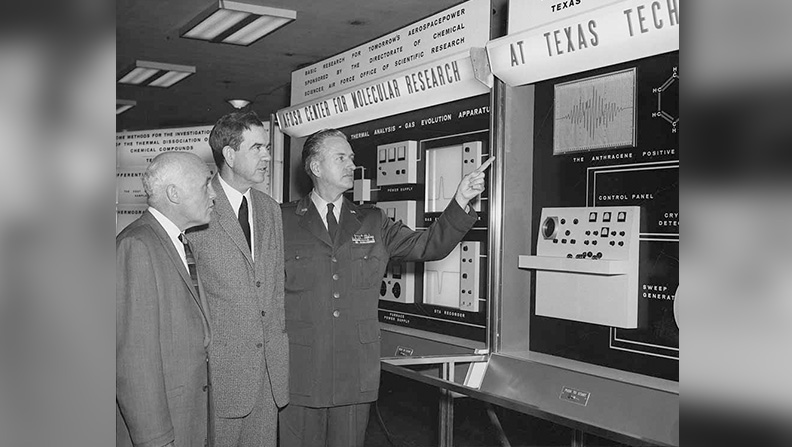
From Antarctica to Mars , research at Texas Tech has come a long way since Senate Bill No. 103 established the Texas Technological College in 1923.
Texas Tech was recognized by the Carnegie Classification in 2015 and 2021 as a “Tier One” Very High Research University, marking the institution as one of the top research universities in the nation. The classification is a high achievement, and it's one made possible thanks to the foundation laid by generations of Texas Tech researchers.
Seemingly snuck into a 244-word sentence in SB 103 is one mention of research, stating that “it shall be the duty of the board of directors to furnish such assistance to the faculty and students of said college as will enable them to do original research work to apply the latest and most approved method of manufacturing.”
Legislators always intended for research to be carried out at Texas Tech, and college students were carrying out original research by 1927, when the first group of 40 students began graduate work. The first master's degrees were conferred in 1928, including a Master of Arts in History awarded to Horace Bailey Carroll, whose thesis, “Social Life in West Texas From 1875 to 1890” is preserved by the Southwest Collection.
Getting Started
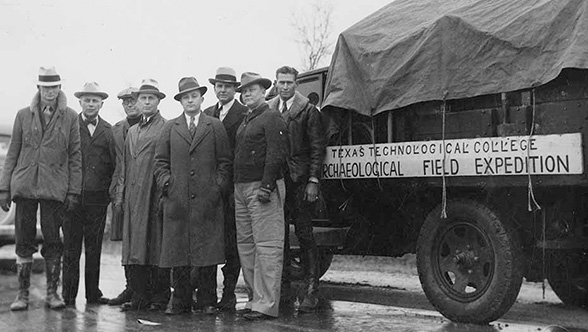
Early research reached far beyond the typical laboratory. In 1934, William Curry Holden, professor of history and anthropology and director of archaeological research at Texas Tech, led an expedition to Mexico to study the culture of the Yaqui Indians of Sonora . It was the first of several trips the team took to Sonora, which culminated in the release of a 142-page Texas Technological College Bulletin titled “Studies of the Yaqui Indians of Sonora, Mexico No. 2.” Copies of the book were requested from as far away as Sweden.
But there were some setbacks in establishing a strong research program at Texas Tech. In 1937, the Bulletin of the Texas Technological College argued for more funding for instructional salaries, facilities, and research.
In just over a decade, the Bulletin states, research work conducted by candidates for a master's degree at Texas Technological College added materially to the information and the general knowledge of the institution, and also stimulated the interest of undergraduate students in scientific fields of study.
Holden “Casually” Establishes Doctoral Programs
World War II came, and the United States pulled itself from the Great Depression. Within a decade of the Bulletin's publication, Holden was the dean of graduate studies, and he decided that since Texas Tech already met the standards for a doctoral program, it should have a doctoral program.
In “Evolution of a University: Texas Tech's First Fifty Years”, Jane Gilmore Rushing and Kline A. Nall describe how “casually” Holden decided to start the new doctoral programs.
“Why not?” Rushing and Nall said Holden asked.
Holden laid the groundwork, and W.B. Gates became the graduate dean in 1950 when the doctoral work actually began at Texas Tech.
Journey(s) to Antarctica

When F. Alton Wade came to Texas Tech in 1954 to lead the Department of Geology, he had already spent years as a scientist in the Antarctic. Beginning in 1962, Wade led multiple expeditions to Antarctica while at Texas Tech and inspired future expeditions.
Even after Wade's last trip, the next generation of explorers were eager to follow in his footsteps, and by 1971 a new team of researchers were making the days-long journey south. An article about the expeditions and explorers tells the story and showcases pieces in the Museum of Texas Tech University's Antarctica collection.
As recently as 2018, Texas Tech researchers are still going on expeditions to Antarctica, though Natasja van Gestel, an assistant professor in the Texas Tech Department of Biological Sciences, is focusing on plant and microbial life of the ice-free areas of the Antarctic.
Community Support for Research
Rushing and Nall said research activity just “naturally” increased with the growth of the graduate school and incentives offered in the 1960s by grants from the government and private industry.
Lubbockites noticed the advantages of having a university to the city's economy, and the local newspaper demanded more investment in research.
The Lubbock Avalanche-Journal stated the average amount spent on research across the 151 leading institutions was $10.14 million in 1965, while Texas Tech, ranked at 125 on a list from Industrial Research magazine, had expenditures of just $602,256. Although Rushing and Nall said the A-J decried “shortcomings” in research in a series of articles in 1965, they also said it was unclear if Texas Tech's increase of expenditures to $3.8 million by 1975 was related to the newspaper articles. At the time of the publication of “Evolution of a University”, Texas Tech had announced plans to increase research expenditures to $10 million by 1979. In 2021, research expenditures exceed $191 million dollars, the highest in the university's history.
“Because of Tech's research facilities and activity, the economy enjoys certain industries that would otherwise have been attracted elsewhere…”
“Because of Tech's research facilities and activity, the economy enjoys certain industries that would otherwise have been attracted elsewhere – a result that in the public view justifies the newspaper's demands,” the book states.
Cotton & Textiles
Cotton and the industries that support it have always been a vital part of research at Texas Tech. The Textile Engineering Building was one of the first buildings to open on campus and research about how to grow high-quality cotton and how to use that cotton has been continuous.
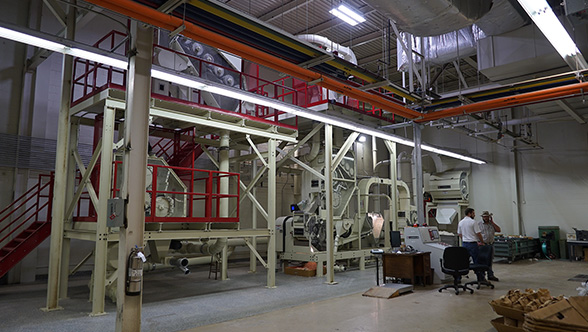
The Textile Engineering Building is now home to Industrial Engineering, but cotton fiber is still a major area of interest at Texas Tech. Now, fiber research is conducted at Fiber and Biopolymer Research Institute (FBRI), located off the East Loop in building surrounded by cotton fields.
Though some of the equipment may look similar, the FBRI is at the forefront of fiber research. The facility has a micro cotton gin on site , as well as equipment for testing fiber quality, and a variety of spinning machines.
Researchers have even developed a process for turning low-quality cotton into bioplastics , which could increase demand for cotton that would otherwise be considered waste.
Making a Difference
Texas Tech didn't just contribute to the economy, however. Texas Tech researchers often study issues directly affecting Lubbock and West Texas communities.
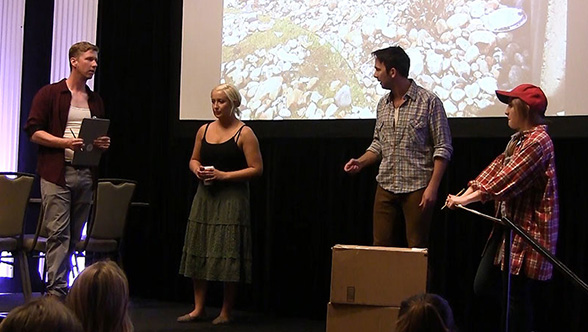
The Institute for Disaster Research (IDR), now the National Wind Institute (NWI), was founded after an EF5 tornado destroyed downtown Lubbock and caused 26 fatalities and more than $100 million of damage.
Researchers have expanded the scope of their windstorm research over the last 50 years. In addition to studying tornadoes, the NWI deploys a Hurricane Research Team that set up specialized equipment to safely collect data on hurricanes. Other researchers are even exploring the immediate needs of natural disaster survivors through performance art .
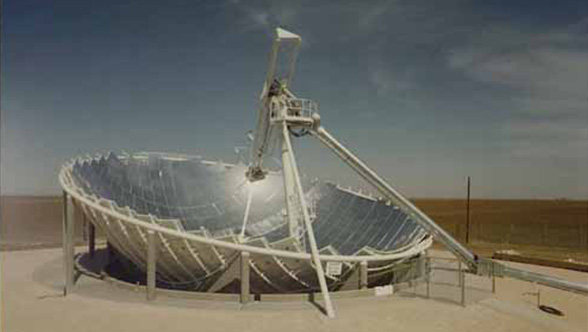
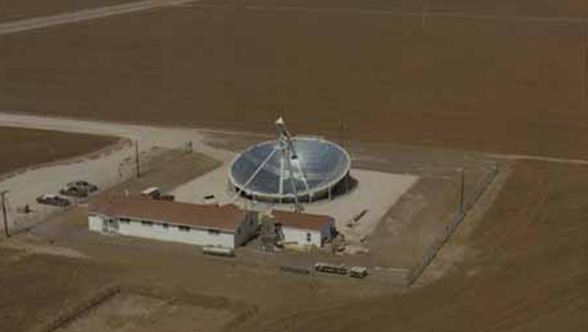
Texas Tech is known for its research on wind turbines, but its history of research in renewable energies stretches back to 1976, when Texas Tech was awarded a $2.5 million research grant to build a 65-square-foot dish, the largest solar energy collector in the world at that time.
The Crosbyton Solar Power Project was both a research project and an attempt to provide energy to an entire town, according to a 2009 edition of the Whitacre College of Engineering's Future of Engineering magazine. The project was in operation between 1980 – 1987, and while it was ultimately discontinued, it contributed important data in the field of renewable energy.
Today, researchers at Texas Tech are developing microgrids that are smaller and more efficient and improving on existing technology to produce renewable energy.
Sprinting Forward
Over the last decade, research, scholarship, and creative activity have increased drastically.
Red Raiders have been part of teams that mapped cotton's A-genome , discovered gravitational waves , captured footage of a black hole , and more.
One researcher worked to understand how workers can better communicate with each other in health care facilities . Others have looked into how views and values influence the processing of science information , as well as how consumers select their purchases .
They've discussed climate change with a sitting US president , discovered new non-invasive ways to detect cancer, doubled cotton plants' yield , and began to investigate novel approaches to diseases like Alzheimer's .
They've documented the oral history of World War II heroes , established mental health initiatives to improve access to mental health care using telehealth , and developed water recycling systems that could be used in space or on Earth .
Research has steadily grown at Texas Tech over the history of the university, with growth truly accelerating in the past 10 years. The university has met and surpassed the goals set by the state legislature in 1923, with no signs of slowing down.
